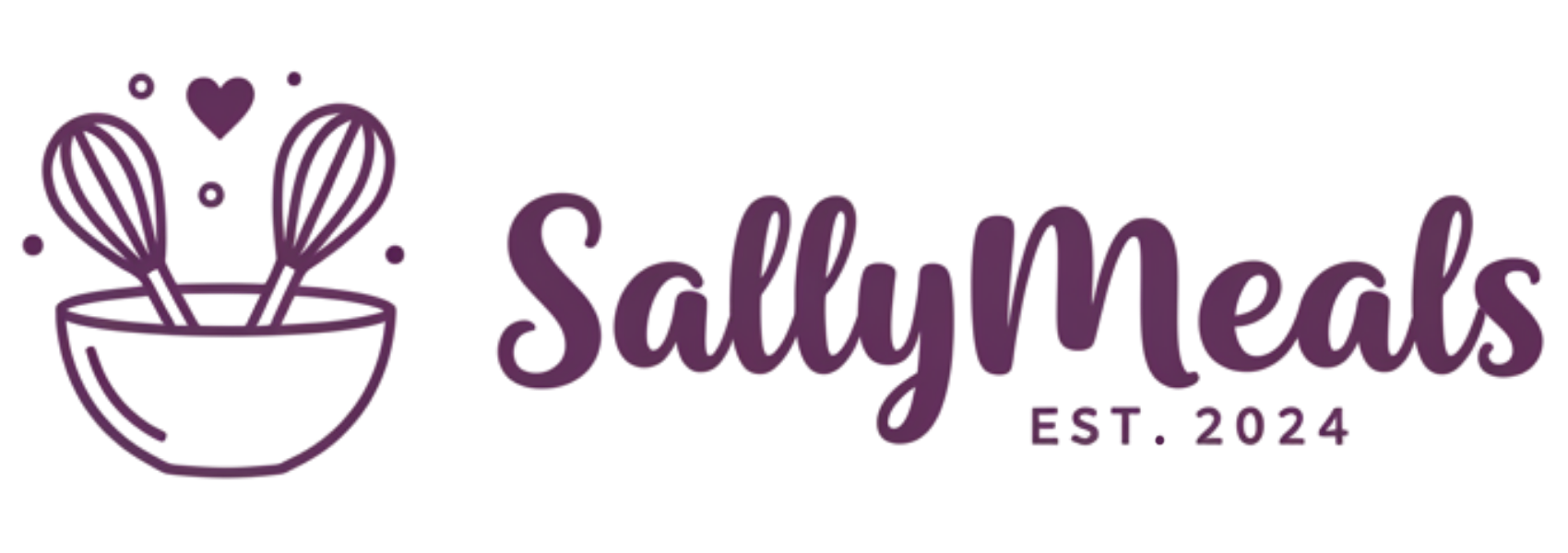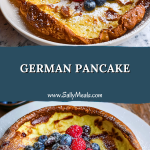The first time I tried making a German Pancake, I was captivated by its dramatic puff and golden edges that curled like a crown in the oven. It felt like magic watching it rise, then collapse slightly to form a perfect vessel for fresh fruit, powdered sugar, or a drizzle of syrup. Unlike traditional pancakes that require flipping, this one bakes all at once in a hot skillet, making it both easier and far more visually stunning.
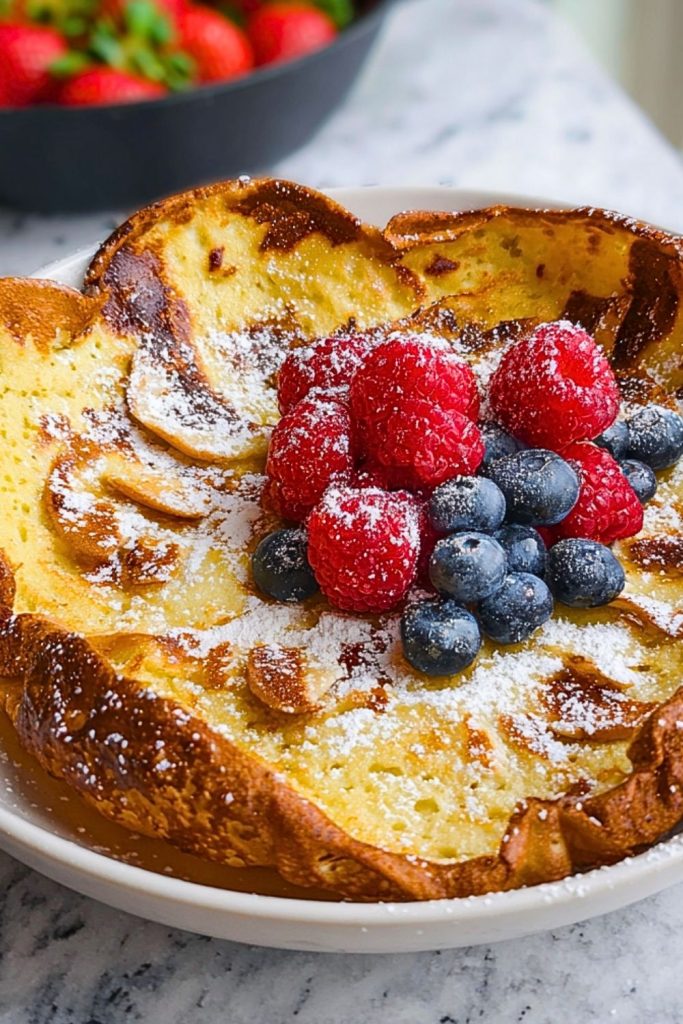
It’s become one of my favorite breakfast showstoppers—ideal for lazy Sundays, holiday mornings, or any time I want to make something that feels special but doesn’t demand much fuss. Whether you serve it sweet or go savory, the German Pancake is a blank canvas that’s just as fun to customize as it is to eat.
Why You’ll Love This German Pancake
The texture is what sets it apart: crisp around the edges and custard-like in the center. It comes together with just a handful of ingredients—eggs, flour, milk—but delivers flavor and drama that belie its simplicity. There’s no standing at the stove flipping pancakes; you just pour the batter into a hot skillet and let the oven do all the work. The result is as elegant as a soufflé and as comforting as a crepe.
What Kind of Skillet Should I Use for a German Pancake?
A heavy, oven-safe skillet is key to achieving the dramatic rise and crispy edges that define a good German Pancake. I always reach for my 10- or 12-inch cast iron skillet because it holds heat beautifully and helps create that signature puff. If you don’t have cast iron, a metal or enameled ovenproof pan will work too—just avoid glass or ceramic, as they don’t heat up as evenly or as quickly.
Preheating the skillet is crucial. You want it scorching hot when the batter hits, which is what triggers that instant rise and golden crust. Pop it into the oven while it preheats, and don’t grease it until the very last second before pouring in the batter.
Options for Substitutions
What I love about the German Pancake is how flexible it can be. While the base recipe is simple, there are plenty of ways to tweak it without sacrificing its essence:
- Milk: Use whole milk for richness, but almond, oat, or soy milk work beautifully too.
- Flour: All-purpose flour is the classic choice, but you can try white whole wheat or even a gluten-free blend if needed.
- Butter: Unsalted butter is best, but if using salted, just reduce any added salt in the batter.
- Toppings: Berries are a favorite, but thin apple slices sautéed in cinnamon and sugar, a spoonful of lemon curd, or even a savory combo like herbs and cheese are amazing variations.
- Sugar: You can omit it completely or swap in maple syrup, honey, or coconut sugar for a different depth of flavor.
Substitutions won’t compromise the overall look and feel of the pancake—so feel free to make it your own!
Ingredients for This German Pancake
- Eggs
Eggs are the backbone of this pancake—they provide structure and help create that signature puff in the oven. Their richness also gives the pancake a custard-like center. - Milk
Whole milk adds creaminess and moisture to the batter, helping it bake up light and golden. A higher fat content gives better flavor and texture, but alternatives can work too. - All-Purpose Flour
This forms the base of the batter and gives the pancake its body. It’s the simple structure that holds everything together while still allowing for that airy rise. - Butter
Melted butter coats the skillet and helps create a crispy, golden edge. It also adds richness and depth to the flavor of the pancake. - Vanilla Extract
Just a dash gives the batter a warm, sweet aroma that pairs perfectly with fruit or powdered sugar. - Salt
A small pinch enhances all the other flavors without making the pancake taste salty. - Optional Toppings (Berries, Powdered Sugar, Syrup)
These take the pancake from good to unforgettable. Fresh fruit and powdered sugar are classic, but feel free to add your own twist.
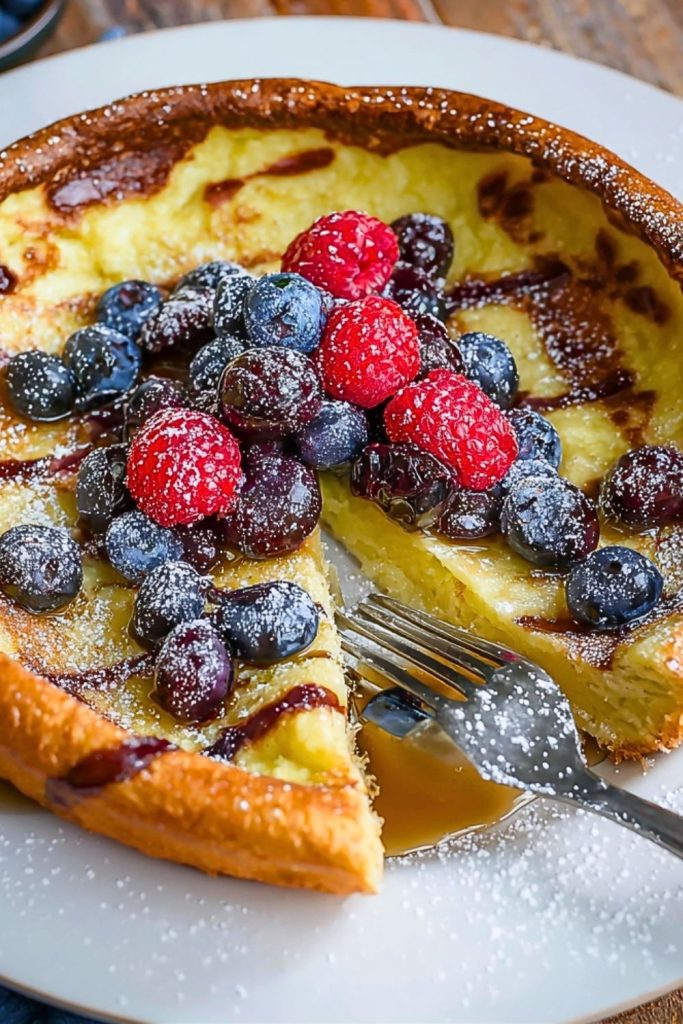
Step 1: Preheat Your Oven and Skillet
Start by preheating your oven to 425°F (220°C). Place your skillet (preferably a 10- to 12-inch cast iron) inside the oven as it heats. This ensures the pan gets hot enough to create that signature puff.
Step 2: Make the Batter
In a blender or mixing bowl, combine 3 large eggs, ½ cup of all-purpose flour, ½ cup of whole milk, 1 tablespoon of sugar (optional), ½ teaspoon of vanilla extract, and a pinch of salt. Blend or whisk until completely smooth and lump-free. Let the batter rest for 5–10 minutes if you can—it helps improve texture.
Step 3: Add Butter to the Hot Skillet
Once the oven is fully preheated, carefully remove the hot skillet and add 2 tablespoons of unsalted butter. Swirl the pan immediately to coat the bottom and sides. The butter should sizzle—this is a good sign.
Step 4: Pour in the Batter
Quickly pour the batter into the hot, buttered skillet. You’ll hear it start to cook right away. Immediately return the pan to the oven.
Step 5: Bake Without Peeking
Bake for 18 to 22 minutes, until the pancake is puffed, deeply golden on the edges, and slightly custardy in the center. Resist the urge to open the oven door—this could deflate your pancake before it’s fully set.
Step 6: Add Toppings and Serve
Once baked, remove from the oven and let it rest for about a minute—it will deflate slightly, which is completely normal. Top with fresh berries, a dusting of powdered sugar, or your favorite syrup, and serve immediately.
How Long to Cook the German Pancake
The German Pancake should bake for 18 to 22 minutes in a 425°F (220°C) oven. You’re looking for puffed-up, crispy edges and a golden-brown surface. The center should be set but still slightly soft and custardy. Every oven runs a little differently, so begin checking at the 18-minute mark but don’t open the door too early or you’ll risk deflating the pancake before it’s fully risen.
Tips for Perfect German Pancake
- Preheat the Skillet: This is non-negotiable. A hot skillet gives you those dramatic, puffy edges.
- Use Room Temperature Ingredients: Cold eggs and milk can shock the hot skillet and prevent the pancake from rising properly.
- Blend Until Smooth: A blender ensures a lump-free batter, but a vigorous whisking will do in a pinch.
- Don’t Overmix: Just combine everything until smooth—no need to whip too much air into the batter.
- Serve Immediately: The pancake begins to deflate within minutes of leaving the oven, so gather everyone before it’s out!
- Customize with Flavor: Add a dash of cinnamon, lemon zest, or almond extract to the batter for extra character.
Watch Out for These Mistakes While Cooking
- Skipping the Preheated Skillet: If the skillet isn’t hot enough, the pancake won’t puff properly, and you’ll miss out on those glorious, crisp edges.
- Overmixing the Batter: Too much mixing can make the pancake dense instead of airy. Blend just until smooth.
- Opening the Oven Door Early: It’s tempting to peek, but even a quick open can let out heat and deflate the pancake before it’s set.
- Using Cold Ingredients: Cold eggs or milk can affect the rise. Let them come to room temperature before mixing.
- Not Using Enough Butter: Butter keeps the pancake from sticking and creates that beautiful golden crust. Don’t skimp.
- Letting It Sit Too Long Before Serving: Serve it fresh from the oven for the best texture and presentation.
What to Serve With German Pancake?
Fresh Berries and Whipped Cream
The tartness of berries balances the rich, custardy pancake, and whipped cream adds a dreamy finishing touch.
Lemon Juice and Powdered Sugar
A classic topping—bright lemon juice and a dusting of powdered sugar cut through the richness and elevate the flavor.
Maple Syrup and Toasted Nuts
For a cozy, sweet bite with crunch, drizzle maple syrup and sprinkle with chopped pecans or almonds.
Yogurt and Honey
Creamy yogurt with a swirl of honey brings a slightly tangy and sweet contrast that’s refreshing and light.
Sautéed Apples with Cinnamon
Warm spiced apples add a comforting, pie-like twist—perfect for chilly mornings or fall brunches.
Savory Style: Bacon and Cheese
Swap sweet toppings for crispy bacon and shredded cheese for a savory spin that’s just as satisfying.
Smoked Salmon and Crème Fraîche
Go gourmet with silky salmon, crème fraîche, and fresh dill—a brunch-worthy combination.
Nutella and Banana Slices
Indulgent and kid-approved—rich chocolate hazelnut spread with soft banana makes a dessert-like breakfast.
Storage Instructions
If you have leftovers (though that’s rare!), the German Pancake can be stored in an airtight container in the refrigerator for up to 2 days. To reheat, place it in a 350°F (175°C) oven for about 8–10 minutes or until warmed through. Avoid the microwave if possible—it tends to make the pancake rubbery and soggy.
You can also freeze slices wrapped tightly in foil or freezer-safe bags for up to 1 month. Reheat from frozen in the oven for best results. While it won’t puff again, it still makes for a tasty and quick breakfast.
Estimated Nutrition (per serving, based on 4 servings)
- Calories: 210
- Protein: 8g
- Fat: 12g
- Saturated Fat: 6g
- Carbohydrates: 18g
- Sugar: 3g
- Fiber: 0g
- Sodium: 140mg
- Cholesterol: 145mg
Note: Toppings and additions like syrup, fruit, or whipped cream will affect the nutritional values.
Frequently Asked Questions
Can I make the batter ahead of time?
Yes! You can prepare the batter a few hours ahead and store it in the fridge. Just give it a quick whisk before pouring it into the hot skillet.
Why didn’t my pancake puff up?
The most common reasons are a skillet that wasn’t hot enough, cold ingredients, or opening the oven door too early during baking.
Can I use a non-dairy milk?
Absolutely. Almond, oat, soy, or coconut milk all work well as substitutes for regular milk.
Is this the same as a Dutch Baby?
Yes, “Dutch Baby” and “German Pancake” are two names for the same delicious dish—just different regional nicknames.
Can I make it gluten-free?
You can use a gluten-free all-purpose flour blend. The texture may be slightly different, but it will still puff and taste great.
What size pan works best?
A 10- to 12-inch oven-safe skillet is ideal. Cast iron is preferred for best results, but any metal pan will do.
Can I make mini versions?
Yes! Use muffin tins or small ramekins for individual servings. Just reduce the bake time to around 12–15 minutes.
How do I keep it from deflating?
Some deflating is normal, but serve it right away for the most dramatic presentation. The puffiness fades fast once it leaves the oven.
Conclusion
The German Pancake is one of those recipes that feels like a magic trick every time you make it. From simple ingredients and an easy technique comes a dish that looks impressive, tastes amazing, and adapts to whatever you’re craving—sweet, savory, or somewhere in between. It’s the kind of recipe you’ll come back to again and again, not just for how good it is, but for how fun it is to make and share.
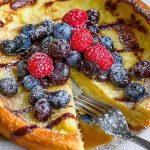
German Pancake
- Prep Time: 5 minutes
- Cook Time: 20 minutes
- Total Time: 25 minutes
- Yield: 4 servings 1x
- Category: Breakfast
- Method: Baking
- Cuisine: German-American
- Diet: Vegetarian
Description
The German Pancake is a spectacular oven-baked breakfast dish with a golden, puffed-up crust and a custardy center. It’s made with a handful of simple ingredients and takes less than 30 minutes from start to finish. Perfect for both sweet and savory toppings, it’s a weekend favorite and a guaranteed crowd-pleaser.
Ingredients
3 large eggs
0.5 cup whole milk
0.5 cup all-purpose flour
1 tablespoon sugar (optional)
0.5 teaspoon vanilla extract
1 pinch salt
2 tablespoons unsalted butter
Optional toppings: berries, powdered sugar, syrup
Instructions
1. Preheat oven to 425°F (220°C) and place a 10- or 12-inch oven-safe skillet inside to heat.
2. In a blender or bowl, combine eggs, milk, flour, sugar, vanilla extract, and salt. Blend until smooth.
3. Let the batter rest for 5–10 minutes if time allows.
4. Carefully remove hot skillet from oven and add butter, swirling to coat the bottom and sides.
5. Pour the batter into the skillet and immediately return to the oven.
6. Bake for 18–22 minutes until puffed and golden brown.
7. Remove from oven and let it settle slightly.
8. Top with desired toppings and serve immediately.
Notes
Serve immediately after baking for best texture and presentation.
Use room temperature ingredients for optimal puff.
Customize with sweet or savory toppings based on preference.
Nutrition
- Serving Size: 1 slice
- Calories: 210
- Sugar: 3g
- Sodium: 140mg
- Fat: 12g
- Saturated Fat: 6g
- Unsaturated Fat: 5g
- Trans Fat: 0g
- Carbohydrates: 18g
- Fiber: 0g
- Protein: 8g
- Cholesterol: 145mg
